Animals That Live in Madagascar
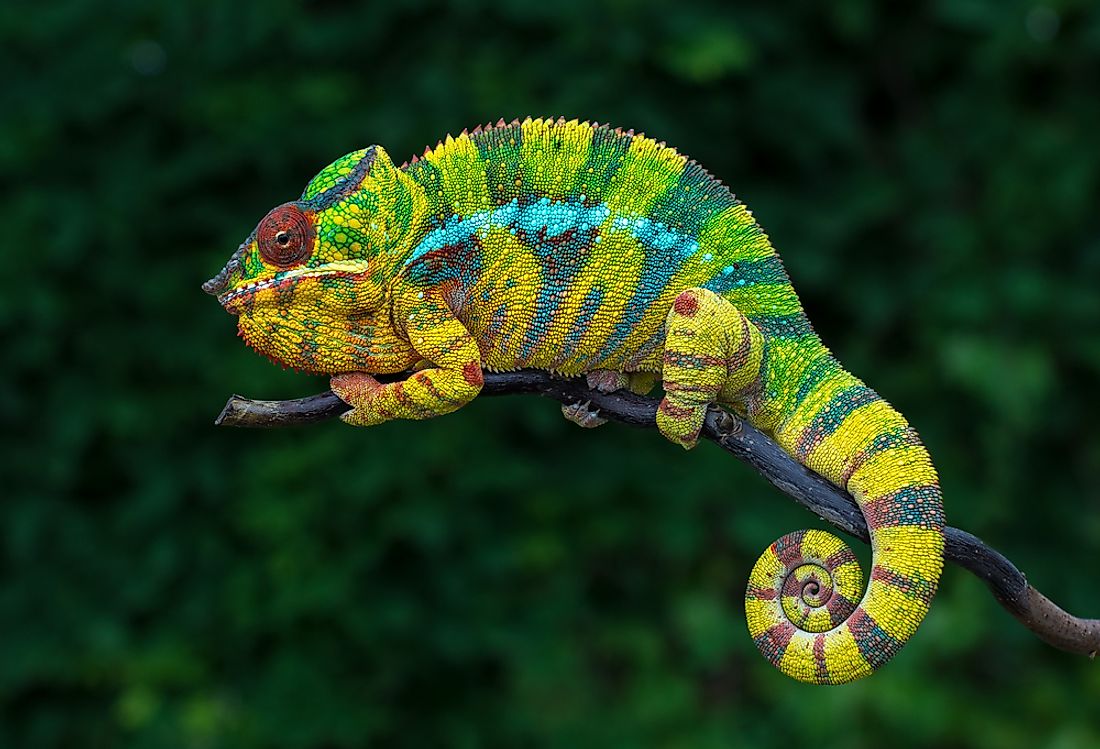
Madagascar is home to some of the unique and unusual species of wildlife in the whole world. The island of Madagascar is home to almost 25,000 species of wild animals with a good number being endangered species. Some of these species of wildlife have been immortalized by cartoon films, but the real animals are far more beautiful and wonderful than what is seen in any of these movies. Most of these species found in Madagascar are endemic, meaning they cannot be found anywhere else in the world. Here is a list of some of the most magnificent animals that live in Madagascar.
12. Lemur
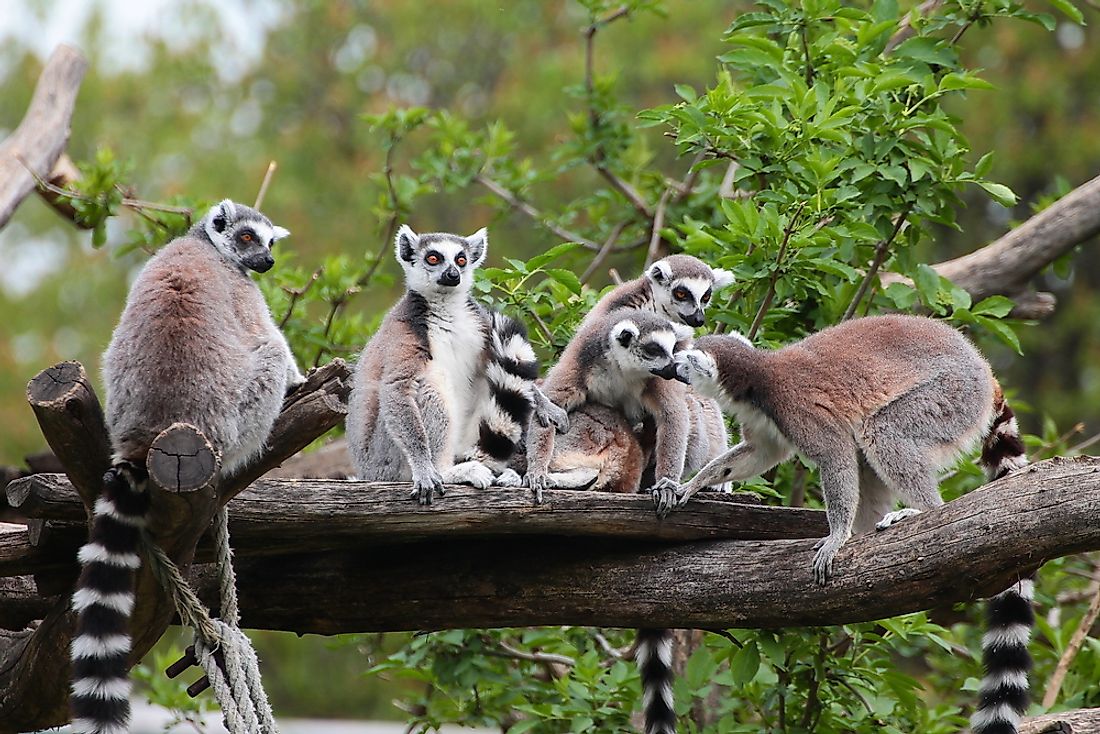
Lemurs are primates that look like an animal in between a dog, a cat and a squirrel that have incredibly unique and exciting behaviors that include singing like a whale. There are more than thirty species of lemurs in Madagascar today that vary in size from 25 gms pygmy lemur to the largest Indri Lemur weighing more than 12 kgs. Lemurs are one of the most threatened animals in the whole planet and according to IUCN Red List of Threatened Species, 22 species of lemurs are critically endangered, 48 are endangered, while 20 are vulnerable.
11. Fossa
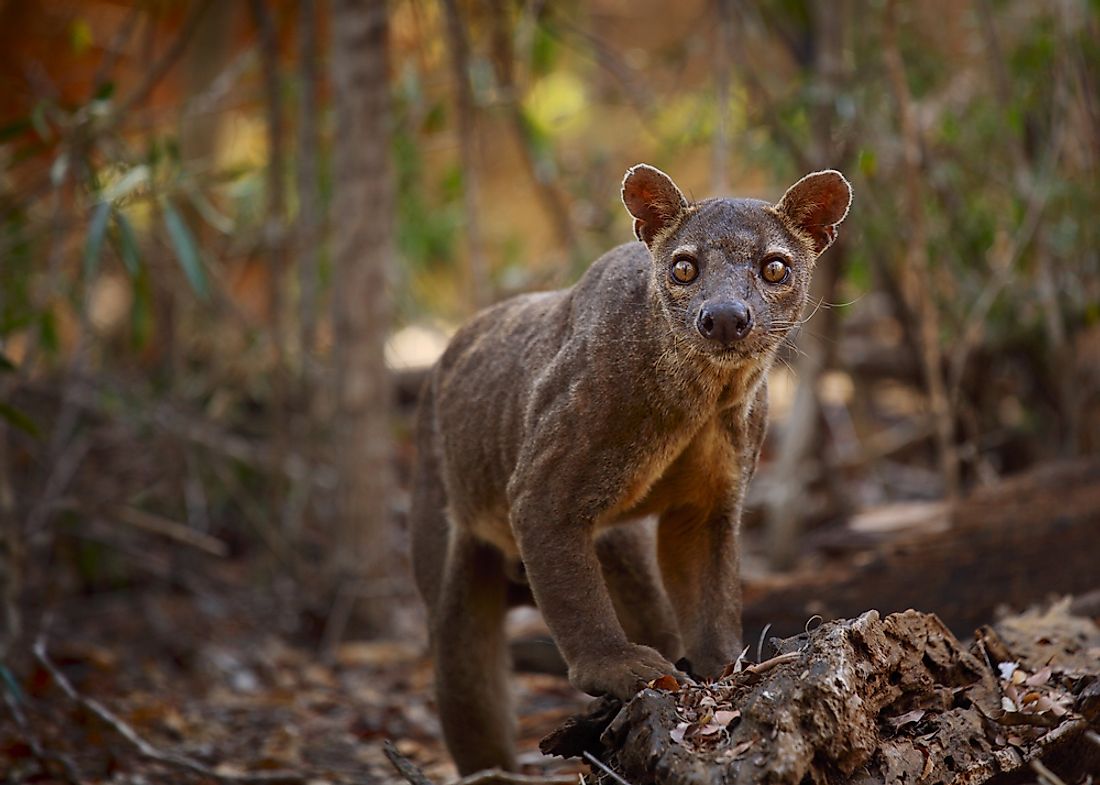
The fossa inhabits the forests of Madagascar and are close relatives of the mongoose. They grow to a length of 6 ft (1.8 m) from the tail to the nose and weigh up to 26 pounds (12 kgs). The animal has a slender body and appears more like a cat with little resemblance to their relative mongoose. The fossa uses it long tail like a tightrope walking pole to move swiftly through trees.
10. Comet Moth
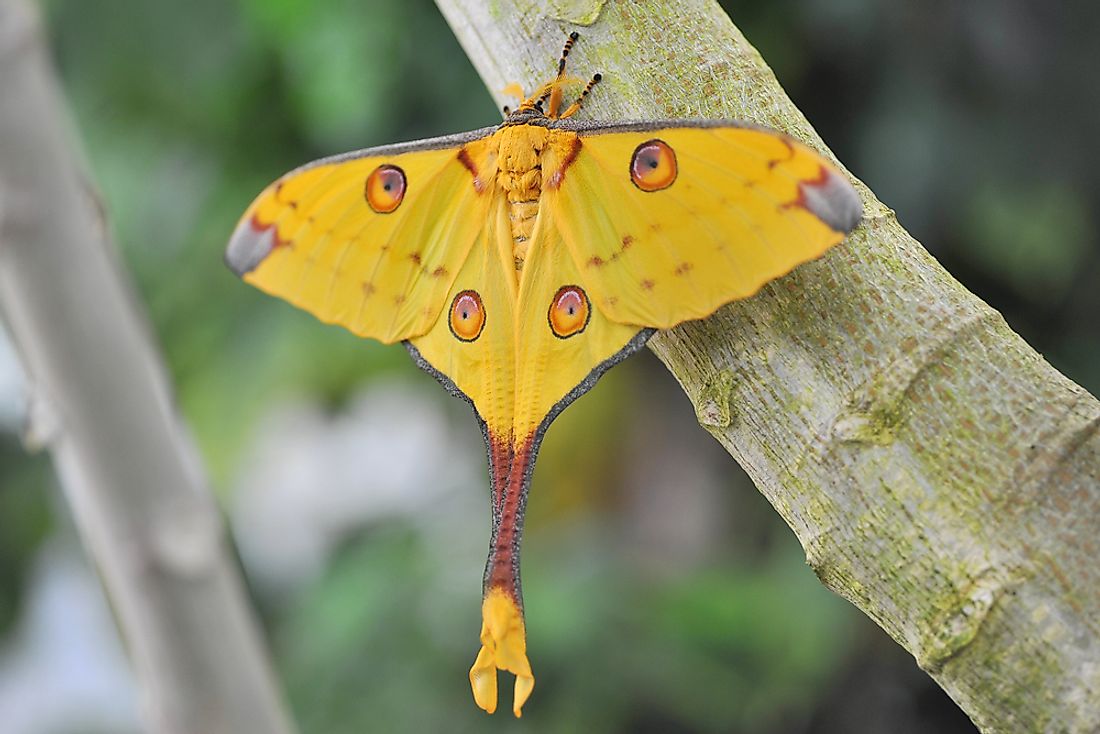
The comet moth (Argema Mittrei) or Madagascan moon moth is one of the most beautiful moths in the world found only in Madagascar. They are among the largest in the world with a wing span that extends to 20 cm coming only second after the Atlas moth of Asia. The insect has bright yellow color and with a long tail and are nocturnal. The females are broader– their wings are rounder, and their tail is also shorter than the males. To this day these beautiful animals have no protection status, and their population status has not been established. The eggs of the moth are collected for trade in the world markets. There are no known farms for these insects in the country, and their existences rely on the already protected shelters.
9. Panther Chameleon
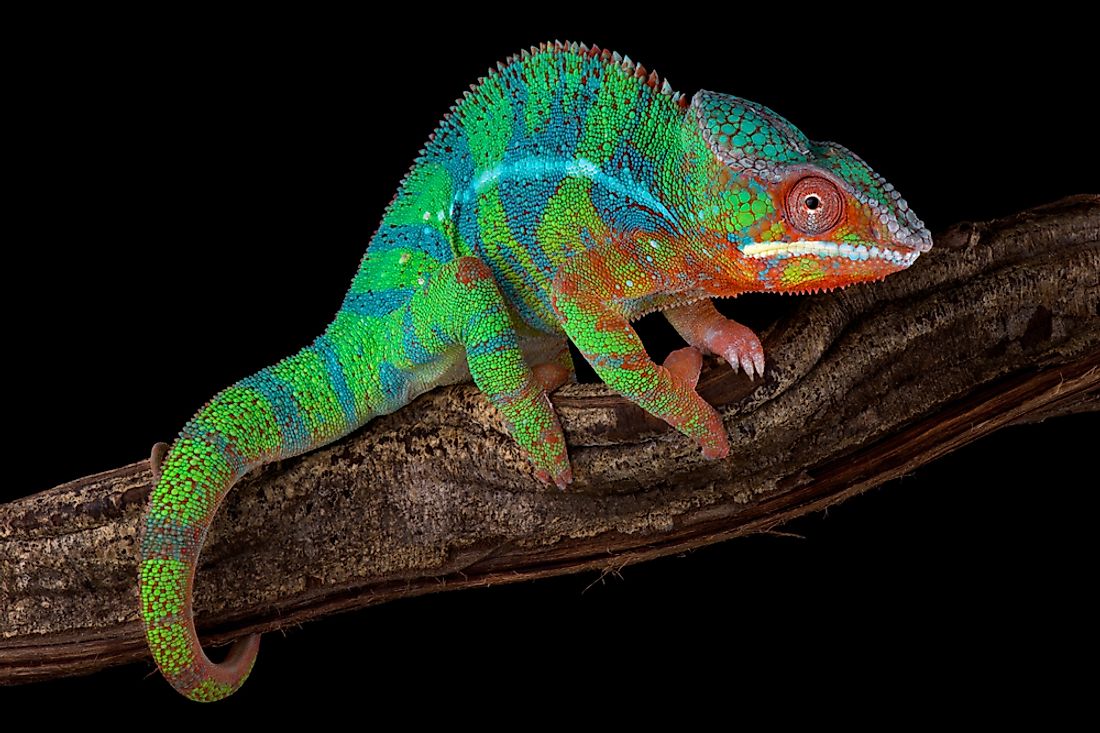
The panther chameleon is native to Madagascar and has been introduced to other islands in the surroundings. It is one of the most colorful with widest color variations of all the chameleons, they are also larger and the most sought after by reptile keepers and traders. Like other Chameleons, panther chameleon has a bony extension on the rear part of its head called the casque. It hunts and traps its pray using its extensile tongue that has specialized muscles that propels the tongue to snare by use of sticky mucus and vacuum created by the muscles at the tip of the tongue.
8. Satanic Leaf-Tailed Gecko
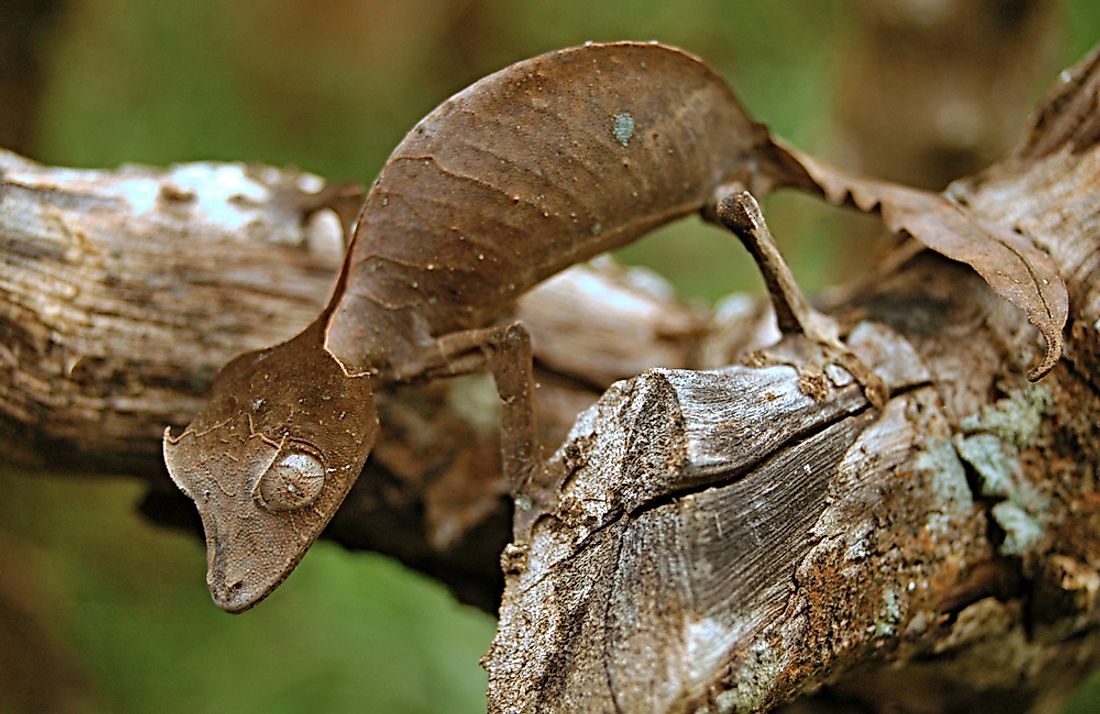
The Satanic leaf-tailed gecko (Uroplatus Phantasticus) is a stunning reptile that can disguise itself in its environment. The body can blend and mimics dead leaves in its habitat so that it cannot be identified by its predators. The body is twisted with a patterned skin, while the tail looks astonishingly like a leaf nibbled by insects, all these characteristics help the gecko to blend into the surrounding foliage. Lately, there has been dropping in their population in the wild, and this makes it vulnerable to extinction.
7. Tomato Frogs
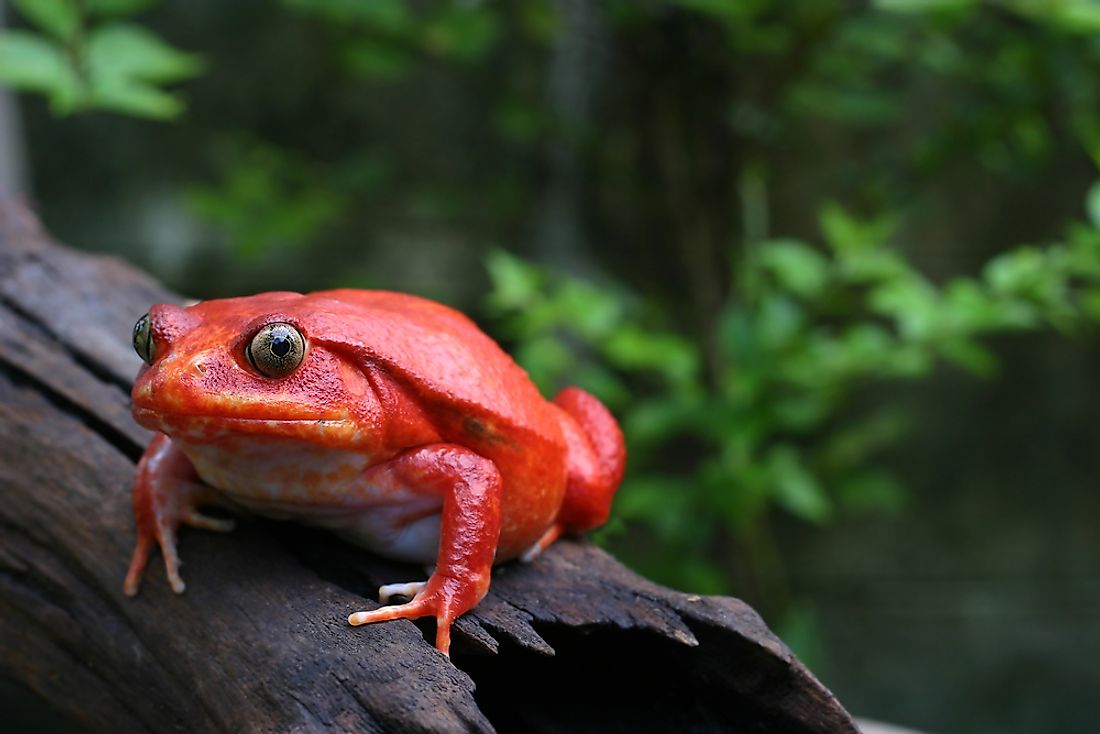
Tomato frogs are found only in Madagascar, mainly in the northwestern region of the island and are chiefly terrestrial, living in the forested areas. Due to deforestation, their habitat has been destroyed but seemingly they adapt well to the cultivated areas, and they are common in gardens. They are brightly colored and ooze off some white sticky mucus when threatened, though they are not toxic, they are irritating to the mucous membrane.
6. Madagascar Fody
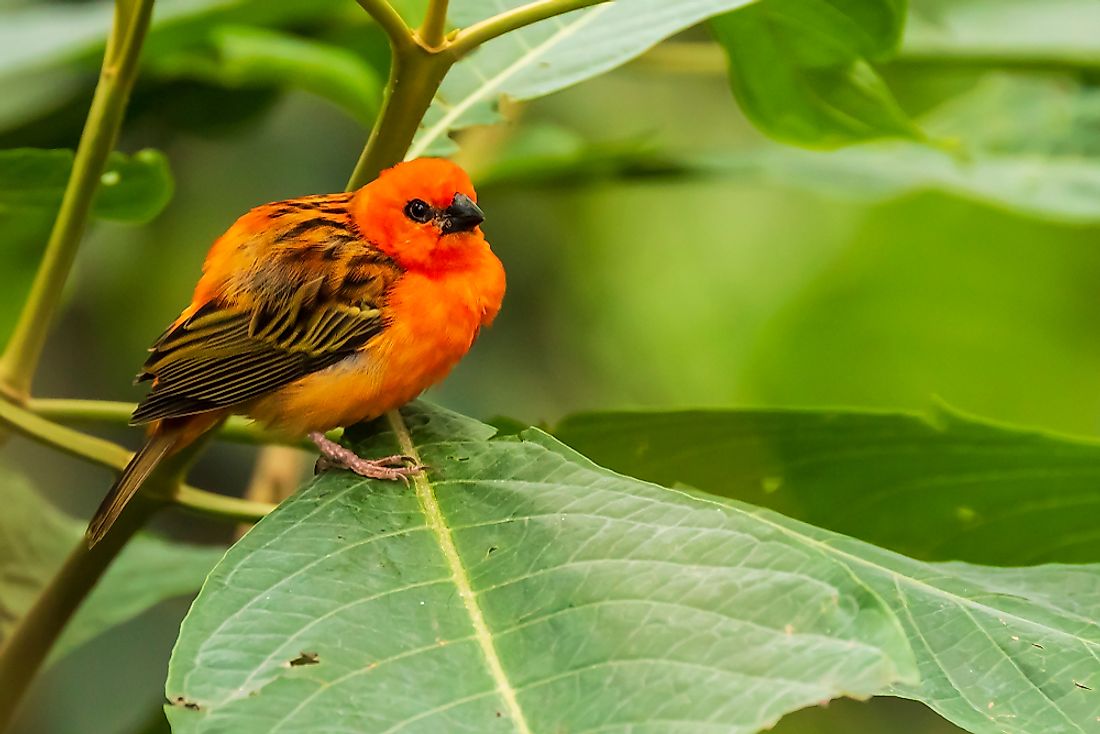
The Madagascar fody is a bird native to Madagascar and have been introduced to other surrounding islands like Comoros, Seychelles, and Mauritius and recently the species have been spotted as far away as the Arabian Peninsula. They grow to about five inches (12.5-13.5 cm) and weigh approximately 0.5-0.7 oz (14-19 gm). The male has a bright redplumage and some black markings around the eyes and olive brown on the wings and the tail. The plumage varies widely from orange to yellowish and during mating the males undergo molting and plumage change to olive brown that look like the females. They are abundant on the island are not part of the endangered species.
5. Madagascar Hissing Cockroach
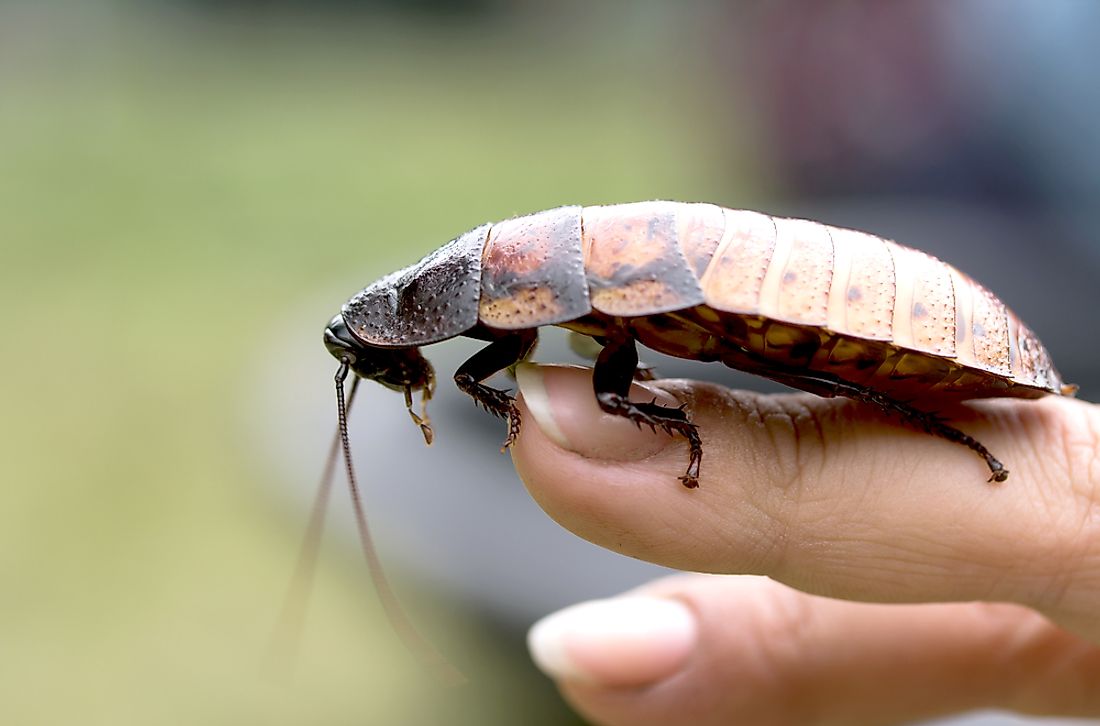
Madagascar hissing cockroaches are oval shaped and shiny brown insects without wings. The male has horns that he uses in aggressive battles that are more like mammals. During the conflict, the roaches hiss, hence where they got their name. The cockroach that wins the battle hisses more than the loser. Unlike most insects that make noise by rubbing parts of their body parts together or vibrating the membranes, the Madagascar cockroach amazingly uses their breathing holes by exhaling air, a behavior common to vertebrates. The insect has a life span of between two and five years and grows to between two and three inches (5-7cm) long.
4. Aye-aye
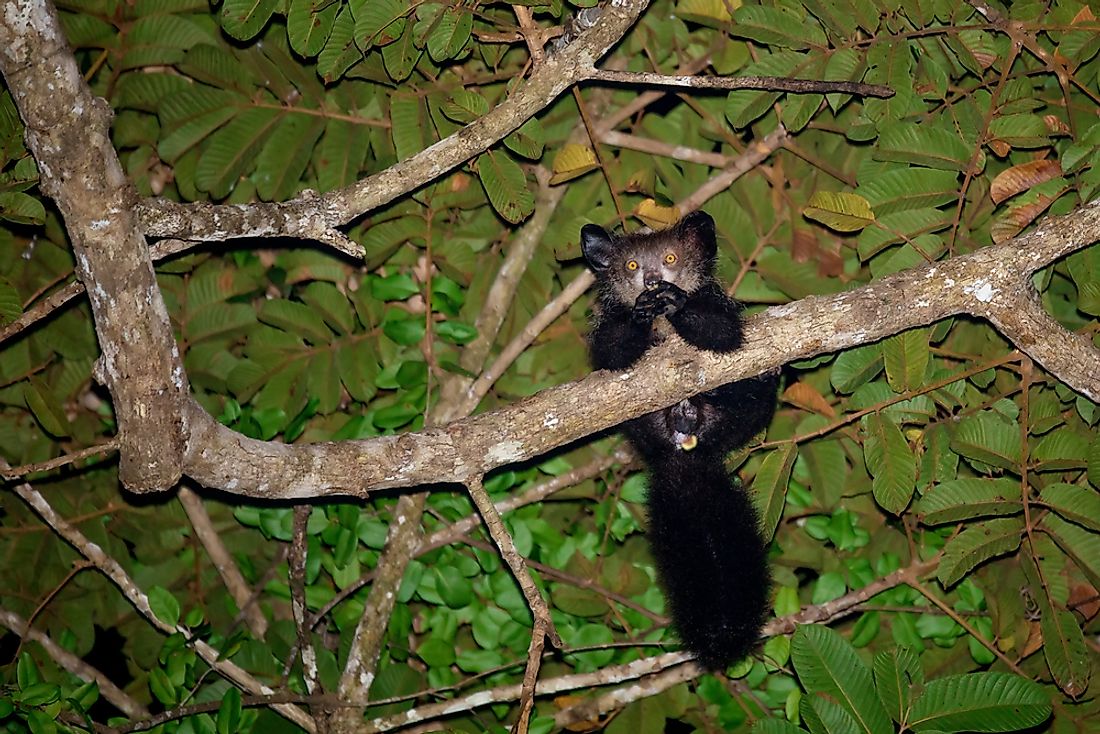
The aye-aye is a nocturnal primate that lives primarily in the trees. Their big toes and long tails allow them to hang comfortably on the tree while they use their echolocation to find food such as insects. Aye-ayes also have sensitive big ears and eyes that help them to locate food. Because of their bizarre appearance, they have been considered as a bad omen by the locals in Madagascar. They are also considered endangered species in the country.
3. Madagascar Long-Eared Owl
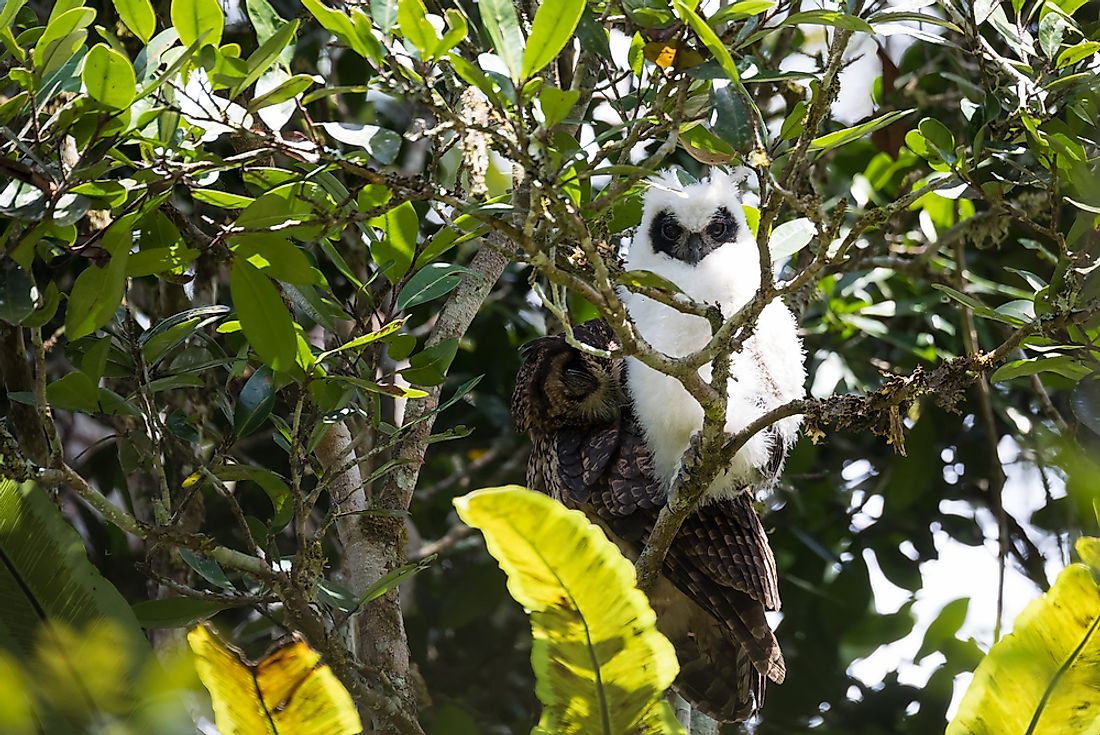
Also simply called the Madagascar owl, the Madagascar long-eared owl is found on the islands of Madagascar. It is about 50 centimeters long making it the largest owl on the island. The females are usually bigger than the males. They are distinguished by a brownish crown and nap on their upper part while the underneath has a black streaking. It also has a brown facial disc and dark brown ear tuff.
2. Lowland Streaked Tenrec
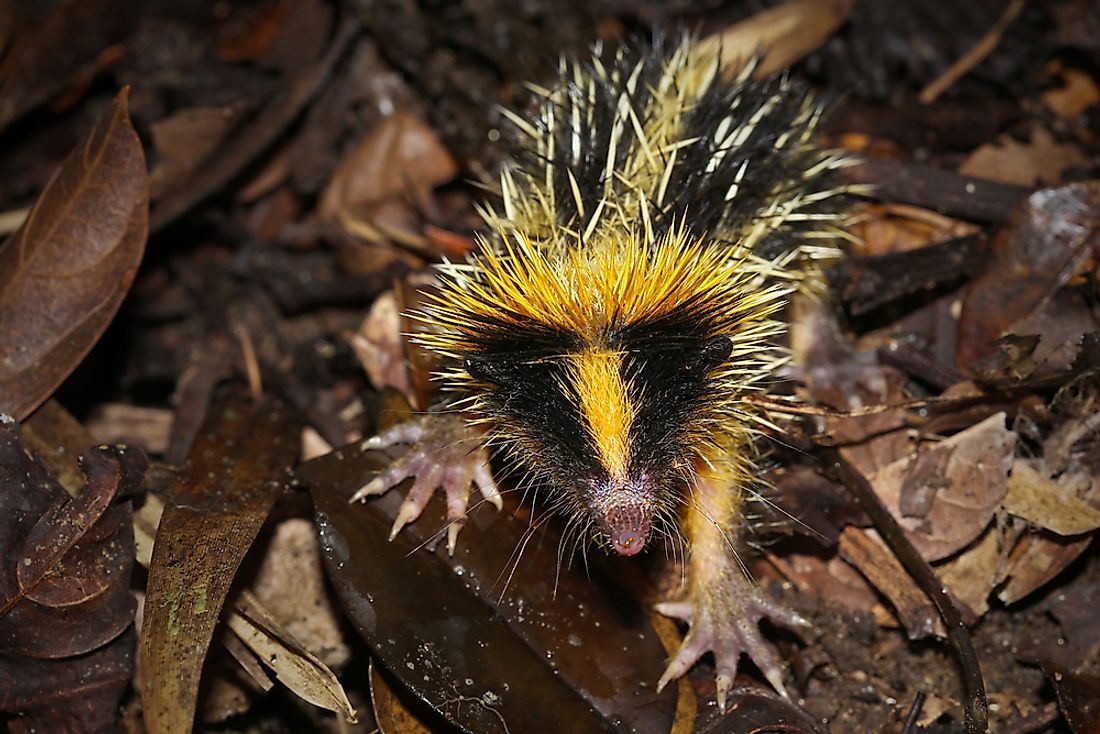
The lowland streaked tenrec is found in the lowland tropical rainforest of northern and Eastern Madagascar. It has a long pointed snout and a vestigial tail. Its pelage is black with yellow stripes and a bright beneath and scattered quills on its body. The lowland streaked tenrec is active both during the day and night and feeds primarily on insects. Its long snout is mainly for poking around the ground when searching for insects. They can also feed on worms, small fishes, and even frogs.
1. Painted Mantella
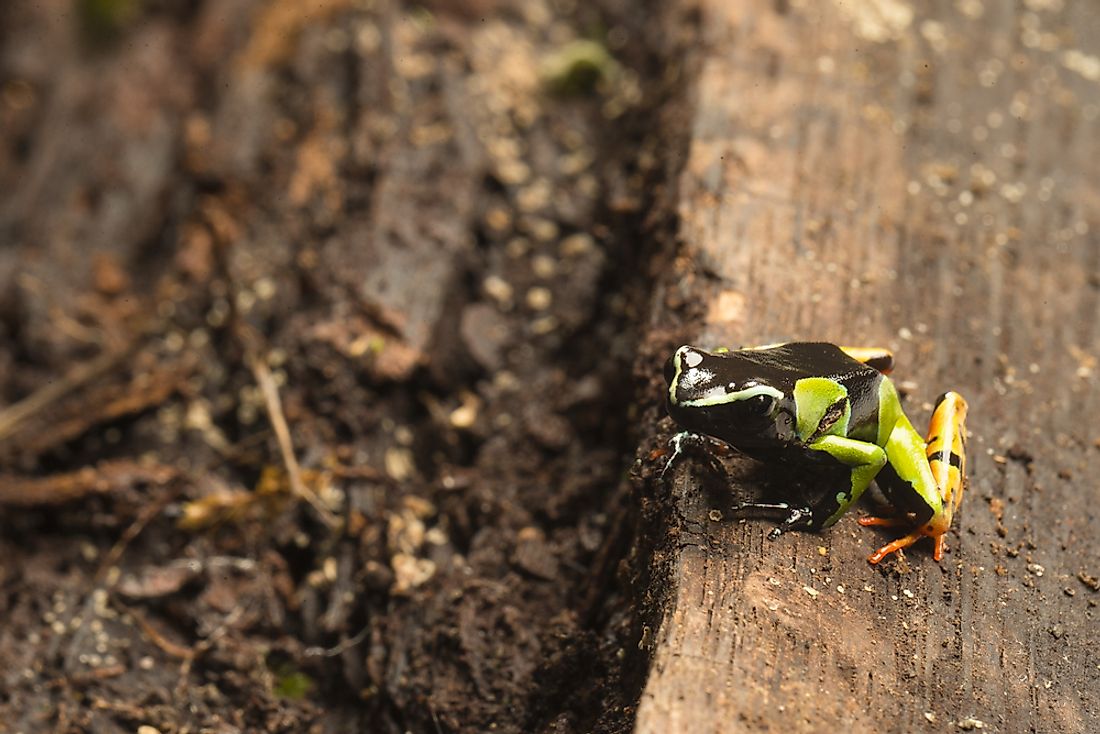
Scientifically known as Mantella madagascariensis, the painted mantella is an attractive frog with green, black, yellow or orange color. The species which is grouped under common frogs is found only in East and Central Madagascar. They inhabit rainforest bordering the fresh water streams. Painted mantilla can tolerate moderate temperature between 75 to 81 degrees F during the day and slightly lower during the night. The painted mantella is a carnivore feeding mainly on insects. The frogs are active during the day and mostly establish small territories. The bright color on the body makes it more toxic and acts as a warning for any predator in the surrounding.







